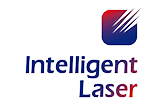The robot market has mushroomed and is becoming the new engine of global manufacturing industry. Behind the sweeping of intelligent manufacturing around the world, the machine vision technology, which is called the "sharp-eyed" role of industrial robots, has contributed a lot! Laser welding seam tracking system is an important equipment for intelligent welding robot.
Principle of laser welding seam tracking system
Vision system, combined with laser and vision technology, can realize the accurate detection of three-dimensional coordinates, and make the robot realize the functions of self-recognition and self-adjustment. It is the core component of robot control. The system is mainly composed of two parts: laser sensor and control host. The laser sensor is responsible for the active acquisition of weld information, and the control host is responsible for the real-time processing of weld information. It guides industrial robots or special welding machines to modify programming paths independently to meet the demand of intelligent production.
The laser seam tracking sensor is mainly composed of CMOS camera, semiconductor laser, laser protection lens, splash guard and air cooling device. The principle of laser triangular reflection is adopted, that is, the laser beam is focused and shaped, and then projected on the surface of the measured object. The diffuse reflection light passes through a high-quality optical system and is imaged on a COMS sensor. After these image information is processed, the working distance, position, shape and other information of the measured object can be generated. By analyzing and processing the detection data, the deviation of the robot programming trajectory can be calculated and corrected. The obtained information can be used for welding seam search and positioning, welding seam tracking, adaptive welding parameter control, and the information can be transmitted to the manipulator unit in real time to complete all kinds of complicated welding, avoid welding quality deviation and realize intelligent welding.
Role of laser welding seam tracking system
Manual or semi-automatic welding relies on operator's naked eye observation and manual adjustment to realize the tracking of welding seam.
For fully automatic welding applications, such as robots or automatic welding machines, the teaching and reproduction of machines, the accuracy and consistency of workpieces and their assembly are mainly relied on to ensure that the welding gun can align the welding seam within the precision range permitted by the process. Once the accuracy can't meet the requirements, the robot needs to be re-taught.
The sensor is usually installed at the front of the welding torch at a preset distance (ahead), so it can observe and measure the collective information of the welding seam in advance, and calculate the positional relationship between the welding seam and the welding torch.
By calculating the deviation between the detected weld and the welding torch, the equipment outputs deviation data, and the motion actuator corrects the deviation in real time, and accurately guides the welding torch to weld automatically, thus realizing real-time communication with the robot control system to track the weld seam for welding, which is equivalent to putting eyes on the robot.
Value of laser welding seam tracking system
Usually, the repetitive positioning accuracy, teaching and reproduction function of the machine can meet the requirements of welding.
However, in many cases, the accuracy and consistency of workpiece and its assembly are not easy to meet the requirements of large-scale workpiece or mass automatic welding production, and there is also the influence of stress and deformation caused by overheating. Therefore, once these situations are encountered, it is necessary to have an automatic tracking device, which is used to perform a function similar to the coordinated tracking and adjustment of human eyes and hands in manual welding. Improve the labor intensity of manual operation, help enterprises reduce production costs and improve operation efficiency.
